MP Board Solutions for Class 10 Civics Chapter 2 – Federalism
MP Board Solutions for Class 10 Civics Chapter 2 – Federalism are essential for understanding the structure of government in a federal system as per the MPBSE curriculum. These well-structured answers help students grasp topics like features of federalism, distribution of power between the Centre and states, and its practical application in India. Designed as per the latest syllabus, these solutions strengthen conceptual clarity and improve exam preparation. Ideal for revision and practice, they enhance understanding of political structure, making them a valuable study tool for scoring well in Class 10 Social Science exams.
MP Board Solutions For Class 10 Civics – Federalism – Exercise Images
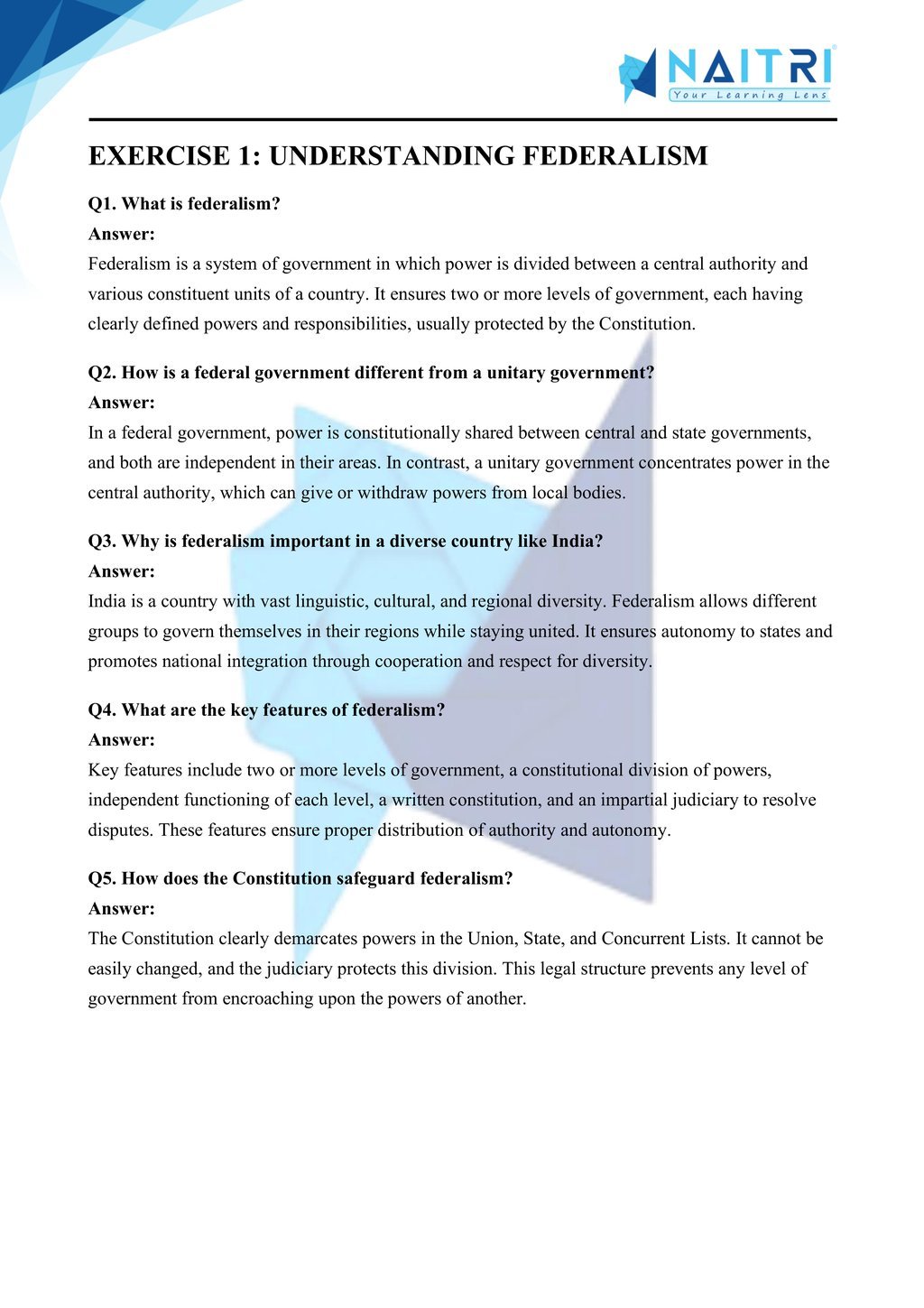
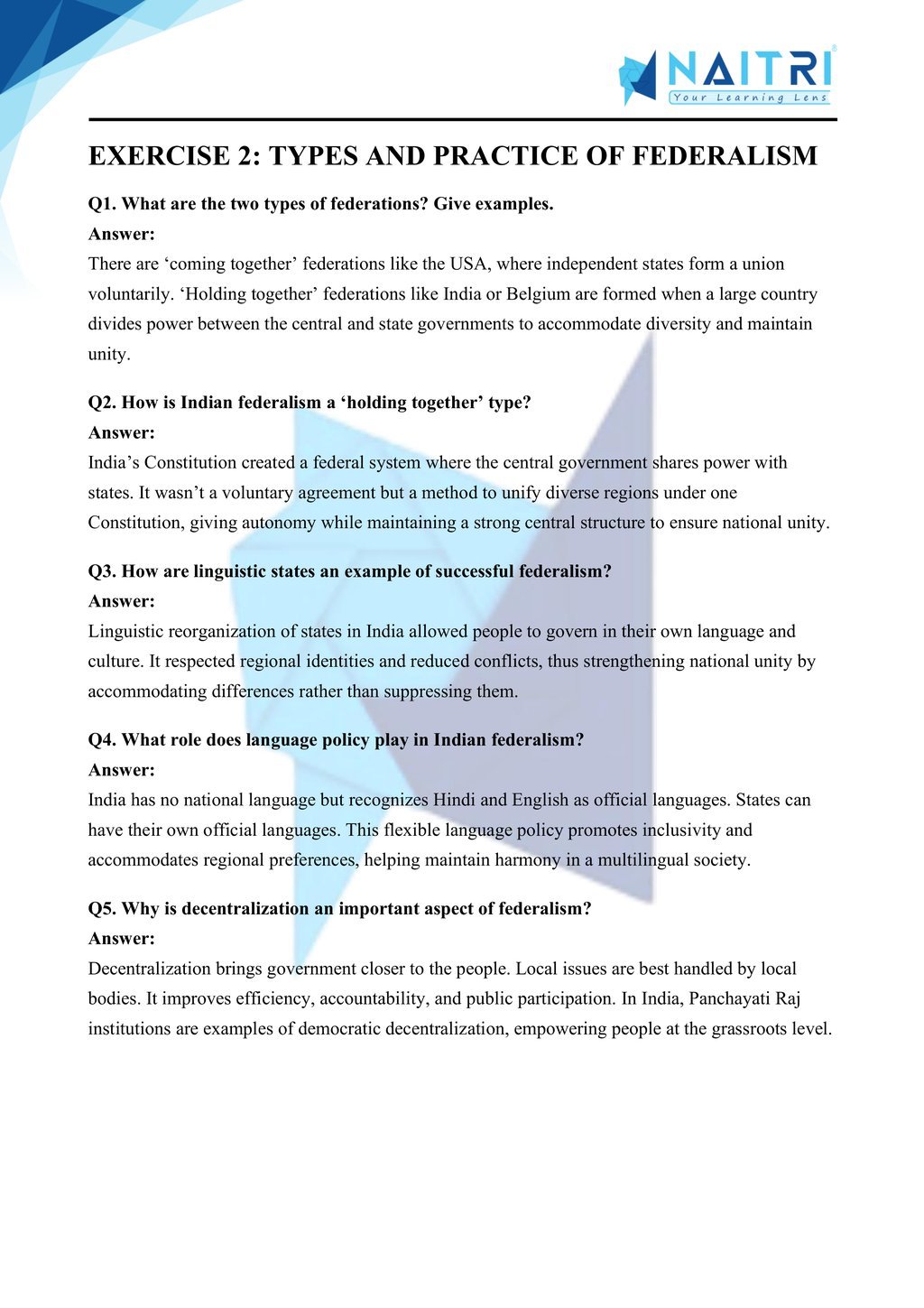
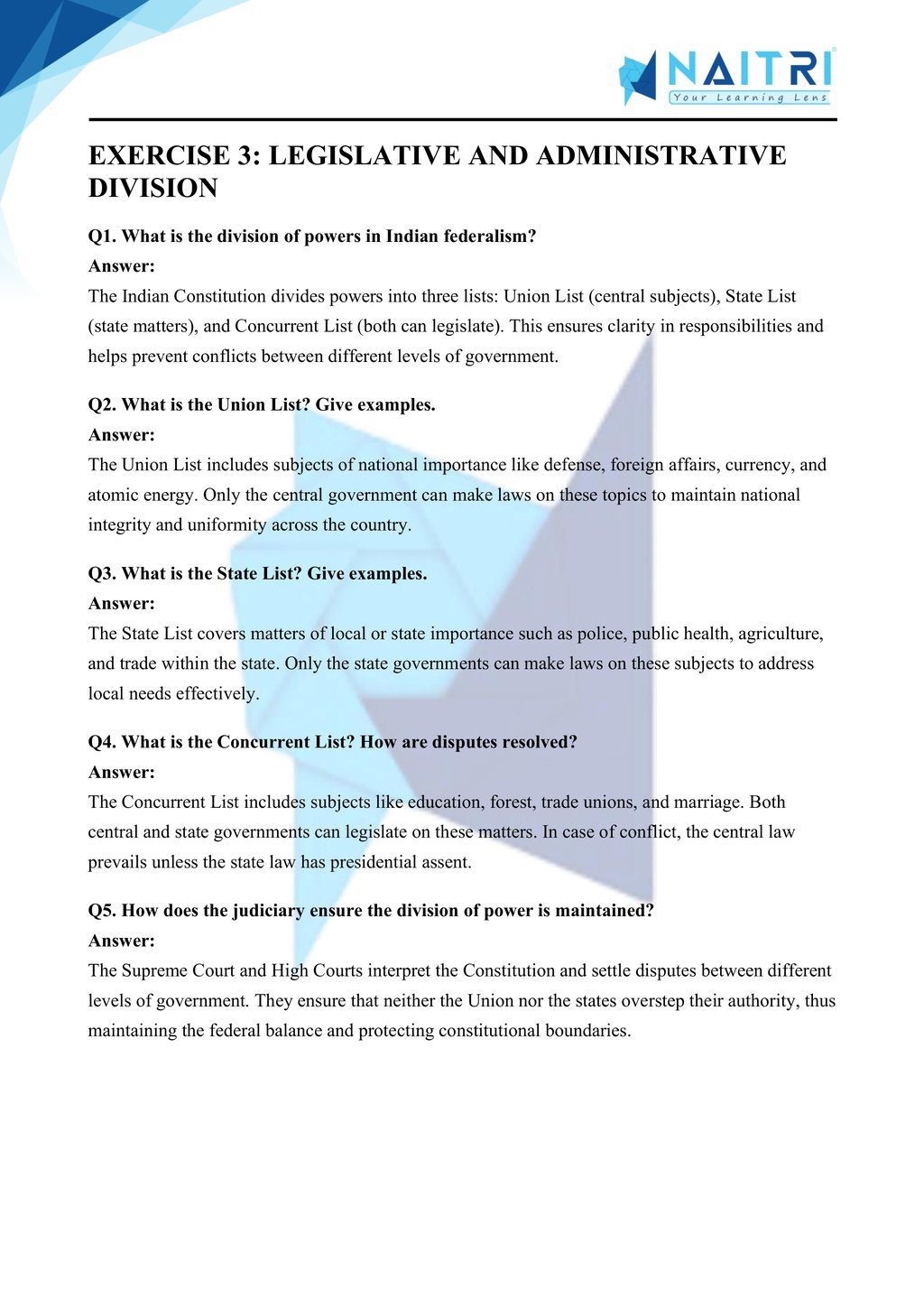
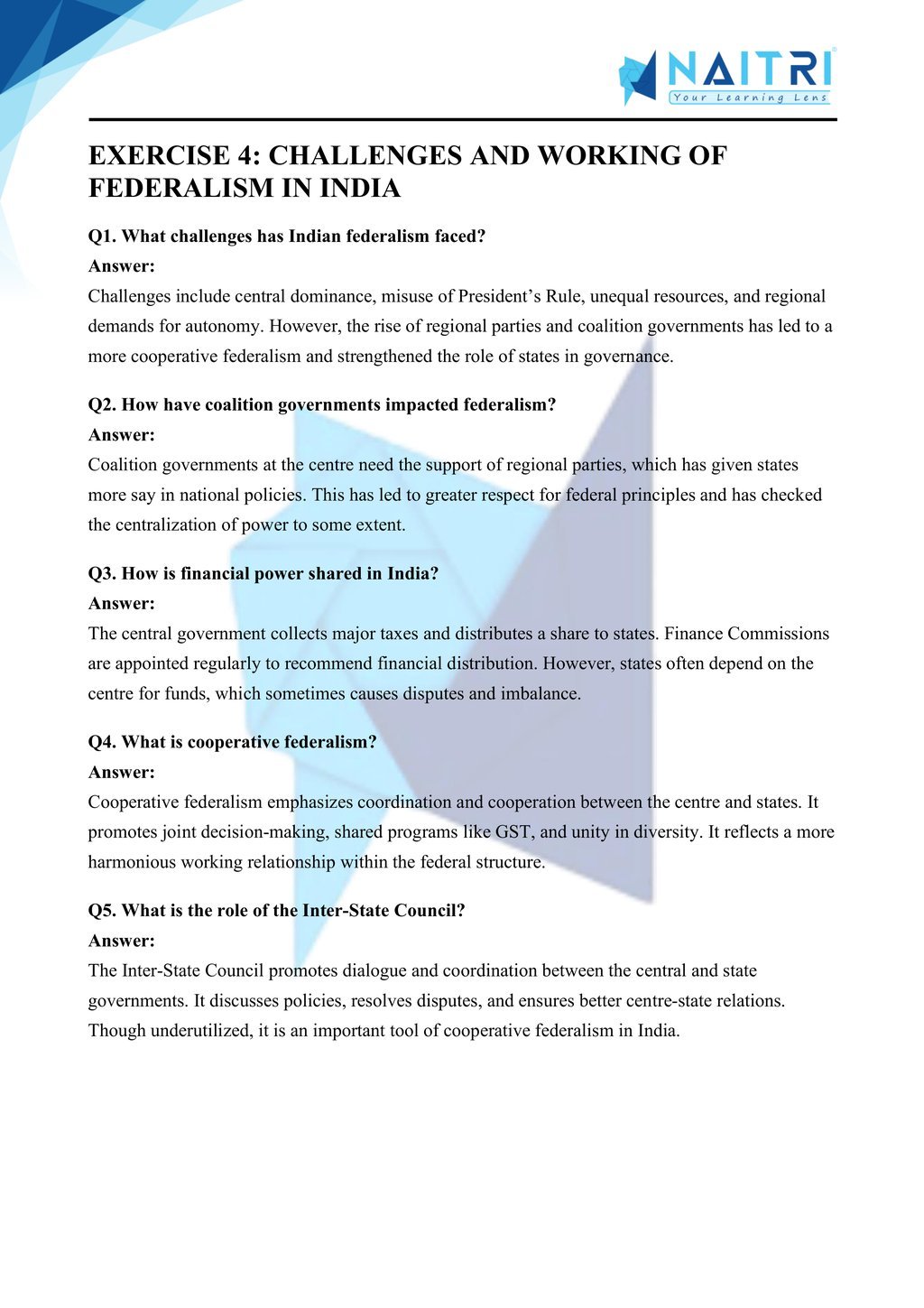
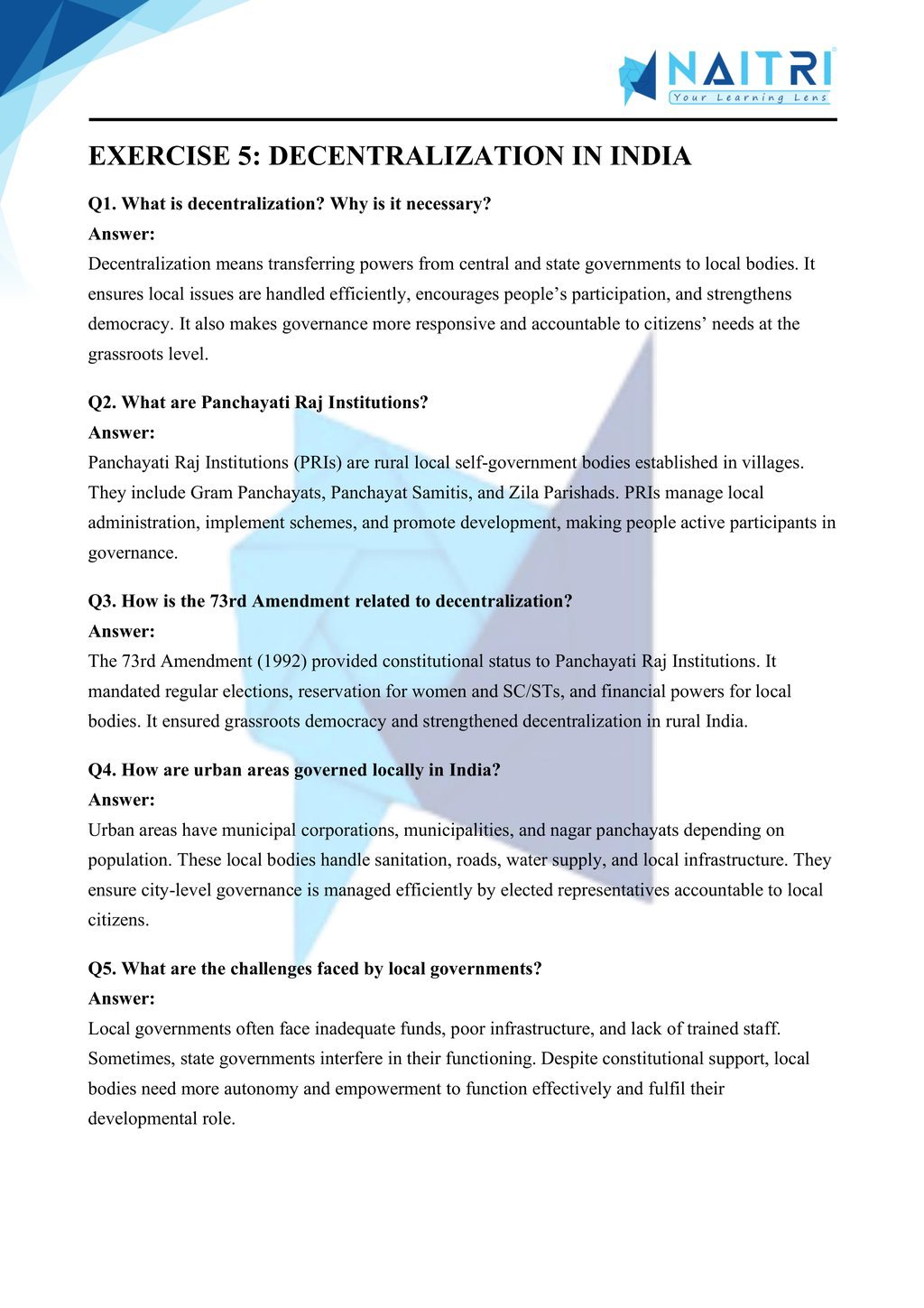
Experience Civics Like Never Before – With AR!
Understanding Federalism is now more exciting and immersive! With the NAITRI App, you can explore complex civics concepts through Augmented Reality (AR). See central and state governments function, powers distribute, and real-life federal models operate — right in front of you. Our AR-powered lessons make learning interactive, 3D, and fun, helping you retain concepts better and enjoy every topic.



Visualize . Interact . Understand . The future of learning is here
Federalism – Important Questions with Answers
What is federalism?
Answer: Federalism is a system of government where power is divided between a central authority and various constituent units, ensuring both share responsibilities and governance.What are the key features of federalism?
Answer: Key features include two or more levels of government, division of powers, a written constitution, independent judiciary, and dual citizenship in some federations.What is the difference between unitary and federal systems?
Answer: In a unitary system, power lies with the central government, while in federalism, power is shared constitutionally between central and regional governments.How is power divided between different levels of government in India?
Answer: The Constitution divides power through three lists: Union List, State List, and Concurrent List, specifying subjects under each government’s jurisdiction.What is the Union List?
Answer: The Union List contains subjects of national importance like defense, foreign affairs, and currency, on which only the central government can legislate.What is the State List?
Answer: The State List contains subjects of local or state importance like police, trade, and irrigation, managed by state governments.What is the Concurrent List?
Answer: The Concurrent List includes subjects like education and forests, where both Union and Stategovernments can legislate. In case of conflict, the Union law prevails.What is decentralization in federalism?
Answer: Decentralization means distributing power from the central and state governments to local levels, promoting grassroots democracy and local development.Why is India called a quasi-federal country?
Answer: India is federal in structure but unitary in spirit, with a strong center, especially during emergencies, giving it a quasi-federal nature.How has the concept of federalism evolved in India?
Answer: Originally, the center had more power. But with coalition politics, economic liberalization, and growing demands for autonomy, states now play a stronger role.What is the role of the judiciary in federalism?
Answer: The judiciary acts as an interpreter of the Constitution, settling disputes between levels of government and upholding the federal structure.How does the Constitution ensure federalism in India?
Answer: Through a written Constitution, clear division of powers, independent judiciary, and amendment procedures that require both Union and State approval.What is cooperative federalism?
Answer: It is a form of federalism where different levels of government work together on common policies and programs to achieve shared goals.What is competitive federalism?
Answer: Competitive federalism encourages states to compete for investment, development, and innovation, thereby improving efficiency and governance.How does language influence federalism in India?
Answer: Language plays a key role. States were reorganized on linguistic basis, promoting cultural autonomyand reducing conflict among diverse communities.What is the significance of local government in federalism?
Answer: Local governments ensure people’s participation, better service delivery, and promote democratic decentralization, especially through Panchayati Raj and municipalities.What are the 73rd and 74th Amendments?
Answer: These amendments introduced constitutional status to Panchayati Raj and urban local bodies, ensuring regular elections and greater powers at local levels.What is the importance of the State Election Commission?
Answer: It conducts free and fair local elections, maintains electoral rolls, and ensures the democratic functioning of local bodies.Why is power sharing essential in federalism?
Answer: Power sharing respects regional diversity, prevents domination by the center, and creates balancebetween national unity and local autonomy.How do states enjoy autonomy in a federal setup?
Answer: States can legislate on State List subjects, manage their own police and resources, and take decisions independently in their constitutional domain.Can the central government dismiss a state government?
Answer: Under Article 356, the central government can impose President’s Rule in case of breakdown of constitutional machinery, though it’s subject to judicial review.What is the significance of financial federalism?
Answer: It involves the distribution of financial resources through mechanisms like Finance Commissions, enabling equitable growth and state development.How do inter-state relations affect federalism?
Answer: Coordination and cooperation among states ensure smooth functioning. However, disputes over resources or boundaries may arise, needing judicial resolution.What is the role of the Finance Commission?
Answer: The Finance Commission recommends how to distribute tax revenues between the Union and states, promoting fiscal balance and equity.Why is federalism important for India?
Answer: India’s diversity in language, religion, and culture makes federalism crucial to accommodate various groups, maintain unity, and strengthen democracy.
Federalism explores the system of government where power is divided between a central authority and various constituent units (states). Through examples from India, Belgium, and the USA, students learn how federalism works in practice. The chapter discusses the evolution of Indian federalism, the role of local governments, and the importance of decentralization. It helps students understand how diversity is managed while maintaining national unity.
Download Naitri App
Easy, Visual Learning — Right on Your Phone
Learn with Augmented Reality! The Naitri app makes CBSE and MP Board concepts interactive and fun — even in low-resource settings. Watch lessons, complete homework, take tests, and track progress — all in one place. Anytime. Anywhere.
Available on








